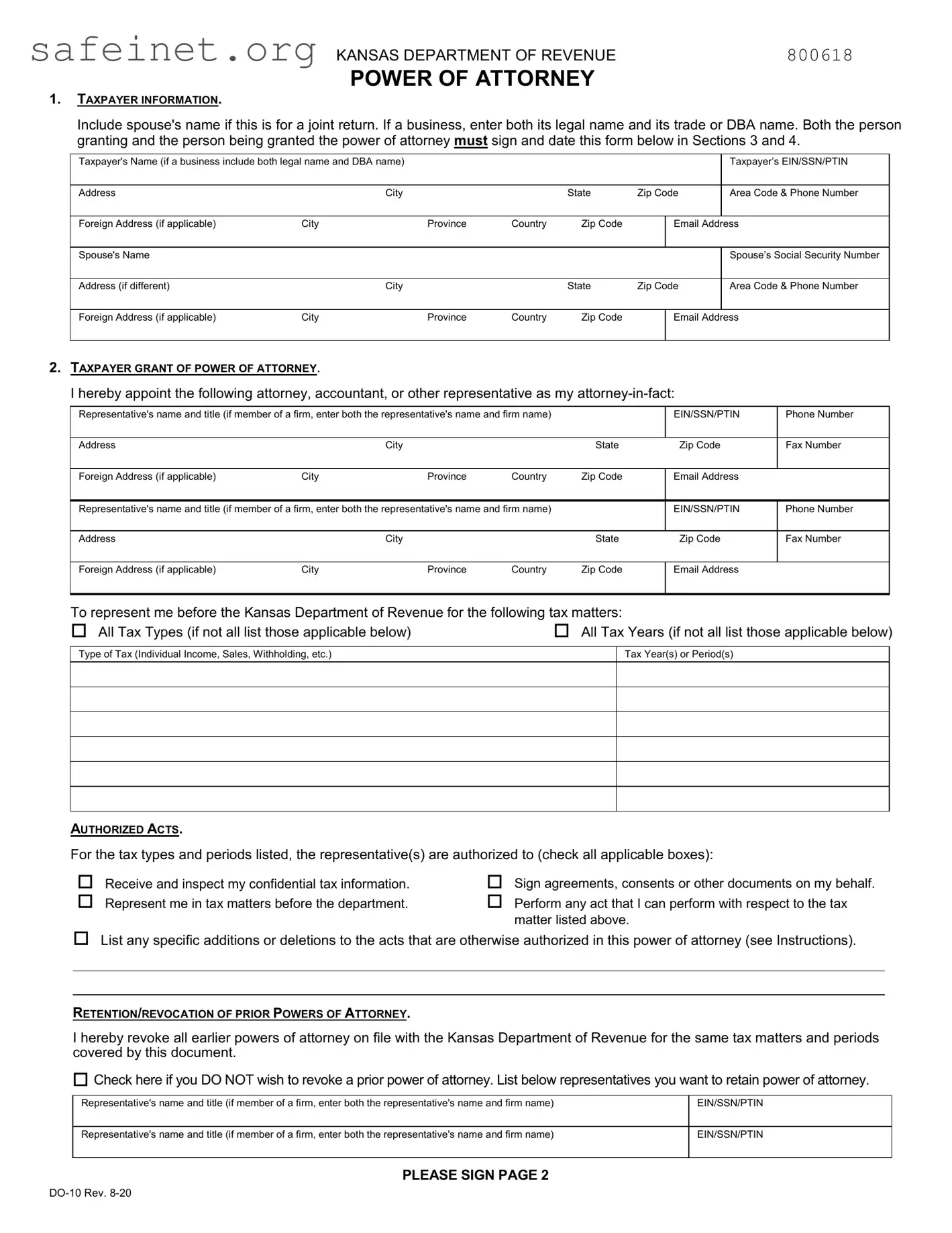SECTION 1. TAXPAYER INFORMATION.
Individuals. In the block provided, enter your name, SSN, address, telephone number, and email address in the spaces provided. If this POA is for a joint return and your spouse is designating the same representative or representatives, enter your spouse’s name, address (if different from your own), Social Security number, and your spouse’s email address.
Businesses. Enter both the legal name and the DBA or trade name, if different. For example, if the business is an individual proprietorship, enter the proprietor's name and the name under which business is transacted. (e.g., Joe Smith dba Joe's Diner). Also enter the EIN (federal employer identification number), telephone number, business address, and email address.
Estates. Enter the name, title, address, and email address of the decedent’s executor/personal representative in the taxpayer section. Use the spouse’s section to enter the decedent’s name, date of death, and SSN.
SECTION 2. TAXPAYER GRANT OF POWER OF ATTORNEY.
Representative's name. Complete all the requested information for each representative. If the representative is a member of a firm, enter the firm’s name too. If you are designating more than two representatives, please complete another form and attach it to this form. Mark the second form “additional representatives.”
Type of tax. If you wish the power of attorney to apply to all periods and all tax types administered by KDOR, please check the box(es) for "All tax types" and "All tax periods". If for a specific tax type and/or tax year enter the type of tax and the tax years or reporting periods for each tax type. If the matter relates to estate, inheritance, or succession tax, please enter the date of the decedent’s death.
Authorized acts. Check all boxes that apply. Use the additional lines to limit, clarify, or otherwise define the acts authorized by this POA. For example, if you wish to limit the POA to a specific time period or to establish an expiration date, enter that information and the dates (month, day, and year) on these lines.
Retention/revocation of prior powers of attorney. Unless otherwise specified, this POA replaces and revokes all previous POAs on file with the department. If there is an existing POA that you do NOT want to revoke, check the box in this section and enter the representative’s name and EIN/SSN/PTIN in the space provided.
If you wish to revoke an existing POA without naming a new representative, attach a copy of the previously executed POA. On the copy of the previously executed POA, write “REVOKE” across the top of the form, and initial and date it again under your signature or signatures already in Section 3.
SECTION 3. SIGNATURE OF TAXPAYER(S).
You must sign and date the POA. If a joint return is being filed and both husband and wife intend to authorize the same person to represent them, both spouses must sign the POA unless one spouse has authorized the other in writing to sign for both. You must attach a copy of your spouse's written authorization to this POA.
SECTION 4. SIGNATURE OF REPRESENTATIVE(S).
Each representative that you name must sign and date this form.
TAXPAYER ASSISTANCE
If you have questions about this form, please visit or call our office.
Taxpayer Assistance Center
Scott State Office Building
120 SE 10th St.
PO Box 3506
Topeka, KS 66625-3506
Phone: 785-368-8222
The Department of Revenue office hours are 8 a.m. to 4:45 p.m., Monday through Friday.
Additional copies of this form are available from our website at: ksrevenue.org


